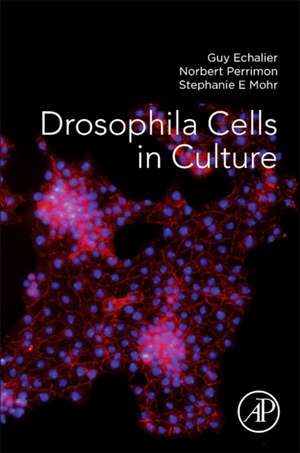Drosophila Cells in Culture
Autor Guy Echalier, Norbert Perrimon, Stephanie E Mohren Limba Engleză Paperback – 29 noi 2017
- Offers full coverage of cell lines and primary cultures
- Provides a go-to resource for methods and studies completed with drosophila cells in culture
- Presents a wide spectrum of experimental techniques
Preț: 685.24 lei
Preț vechi: 962.31 lei
-29% Nou
Puncte Express: 1028
Preț estimativ în valută:
131.16€ • 142.52$ • 110.25£
131.16€ • 142.52$ • 110.25£
Carte tipărită la comandă
Livrare economică 14-28 aprilie
Preluare comenzi: 021 569.72.76
Specificații
ISBN-13: 9780128094730
ISBN-10: 0128094737
Pagini: 258
Dimensiuni: 152 x 229 x 18 mm
Ediția:2
Editura: ELSEVIER SCIENCE
ISBN-10: 0128094737
Pagini: 258
Dimensiuni: 152 x 229 x 18 mm
Ediția:2
Editura: ELSEVIER SCIENCE
Public țintă
early researchers, graduate students, investigators studying developmental biology, genetics, neuroscience, biochemistry and across the biological and biomedical sciences.Cuprins
1. Composition of the Body Fluid of Drosophila and the Design of Culture Media for Drosophila Cells2. Primary Cell Cultures of Drosophila Embryonic Cells3. Continuous Drosophila Cell Lines Established In Vitro4. Cells or Tissues In Course of Differentiation5. Hormonal Control of The Development of Insects: Implications In Organ or Cell Cultures of Drosophila6. Gene Transfer into Cultured and Applications7. Rnai and Crispr (Cas9, Cas9-Act, Cas9-Repressor) Methods to Perturb Gene Function8. Functional Genomics Screens Using Rnai, Crispr, and Orf Overexpression
